Clean Air At Work
Offices and Businesses
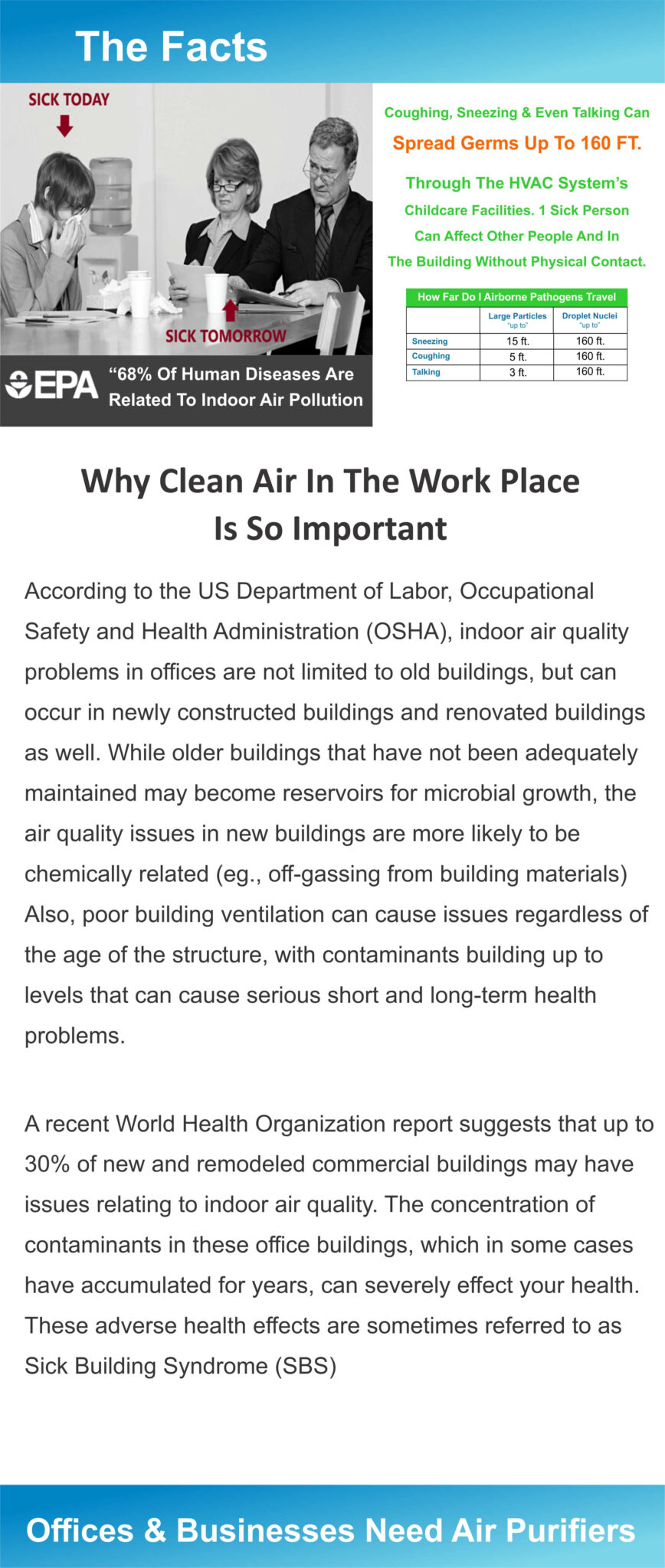
The Importance
What Is Sick Building Syndrome
Sick building syndrome (SBS) describes a range of symptoms thought to be linked to spending time in a certain building, most often a workplace, but no specific cause can be found. Symptoms of sick building syndrome get worse the longer you’re in a particular building and get better after you leave. The symptoms vary from just having minor discomfort to long term illnesses and in some cases even life threatening conditions. The symptoms can sometimes be caused just by being in a certain area of the building.
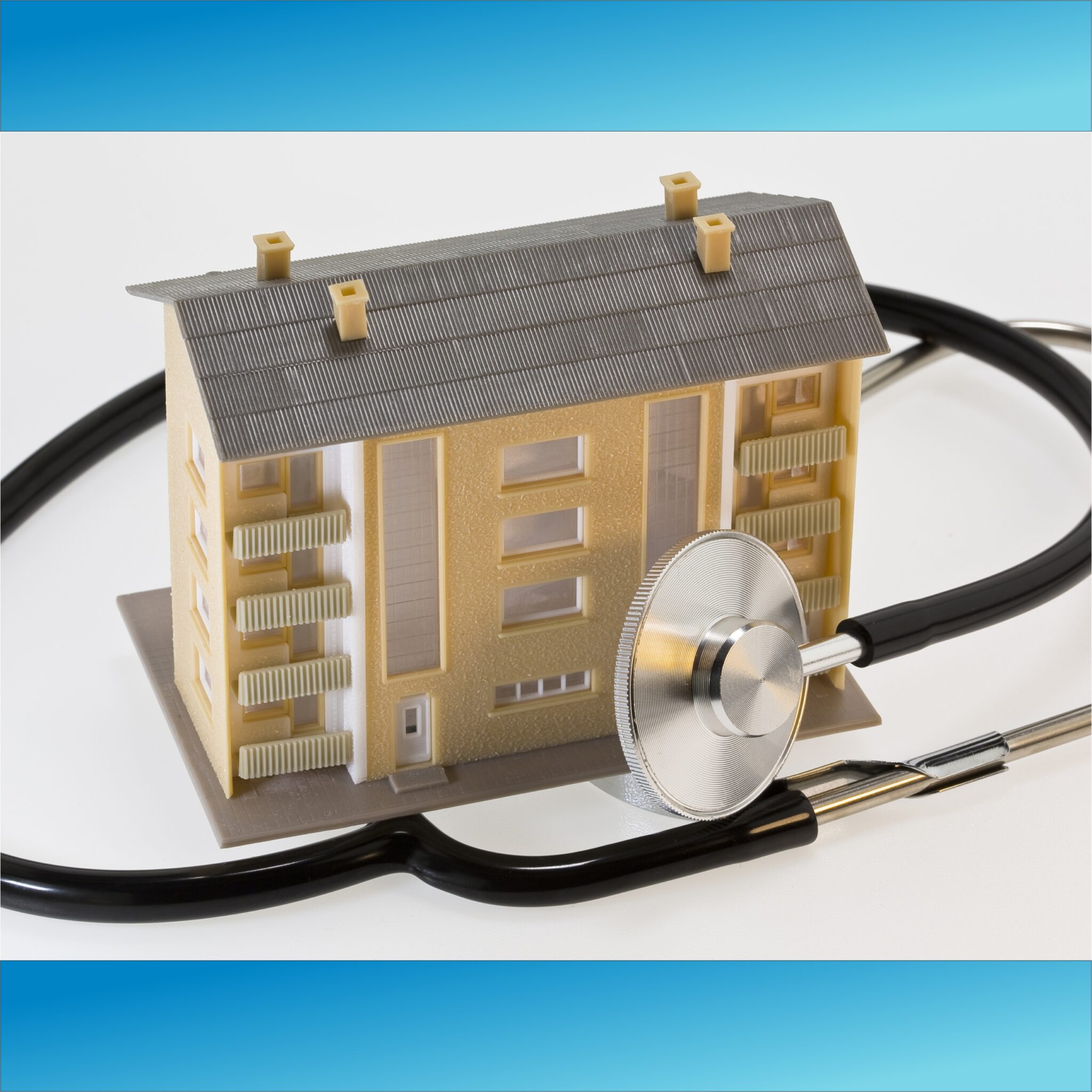

SBS Symptoms:
- Headache
- Fatigue
- Nausea
- Trouble focusing, concentrating or with memory
- Irritation of skin and eyes
- Blocked or runny nose
- Sore or scratchy throat
- Sneezing, cough or trouble breathing
- Hoarse voice
- Patients with asthma can experience more often recurrence of asthma attacks
SBS Causes:
Even if you work in what seems to be a relatively clean environment, you may still be exposed to indoor air pollutants from the following:
- Working in an old building. Ductwork may contain dust, mold spores and bacteria that are then circulated through the entire building
- Working in a recently renovated building. Construction may have uncovered or released hazardous materials into the air (e.g., asbestos, lead)
- Aging or poorly maintained HVAC systems. Can leak carbon monoxide and other harmful combustion gases into the air
- Recently painted walls, new carpets and furniture. Can emit chemicals such as formaldehyde for up to 5 years
- Computers, photocopiers and other electrical equipment. Produce ozone, a toxic gas that is a known lung irritant and asthma trigger
- Laser printers. Can emit dangerous fine particulates
- Underground parking facilities. Carbon monoxide from vehicles can be sucked into air intakes and circulated through the building
- Cleaning products. Produce harmful Volatile Organic Compounds (VOCs)
- Fluorescent lighting. May produce photochemical smog
- Moist plant soils and dirty overflow trays. Ideal breeding grounds for mold and bacteria
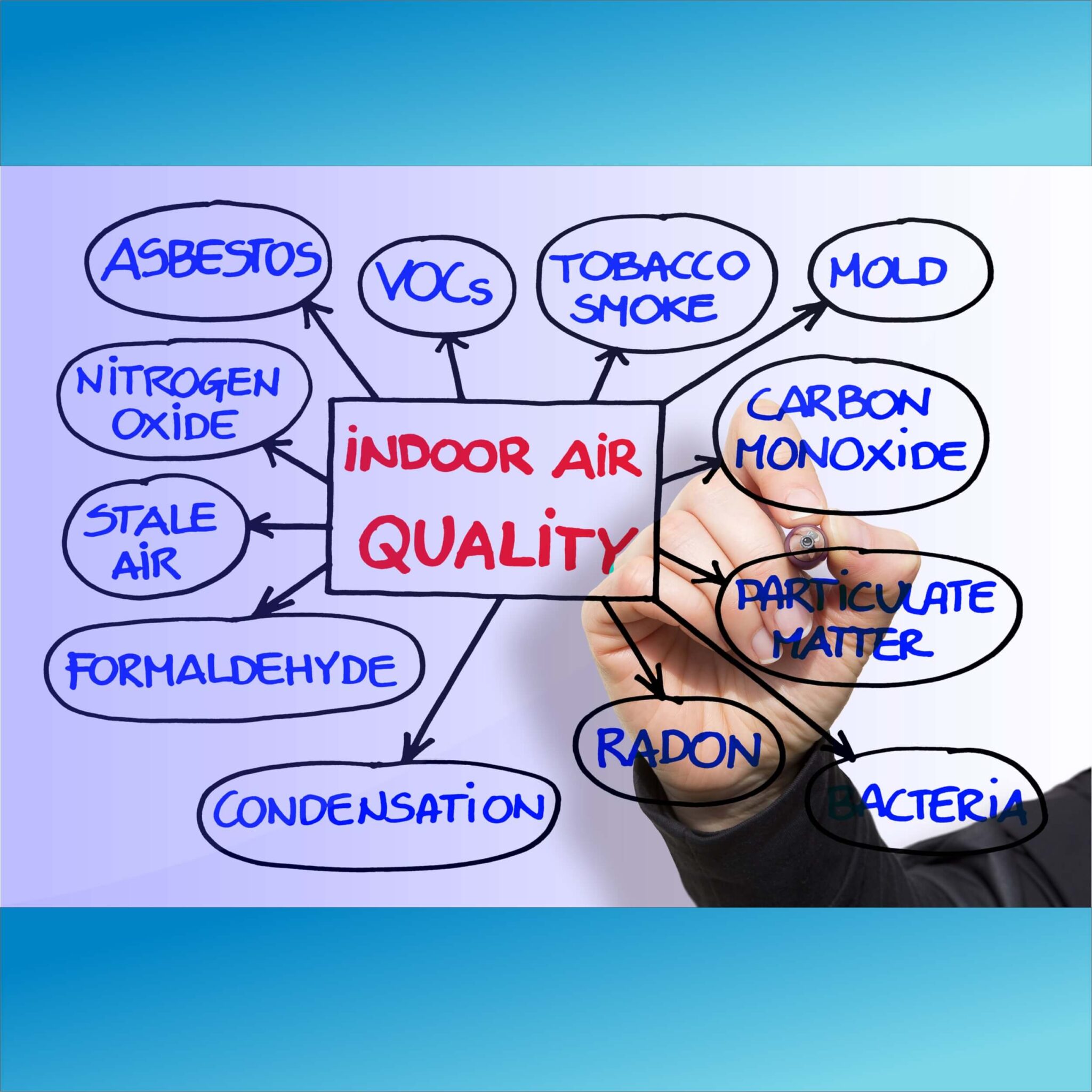

Protecting Your Health At Work
In addition, in an open office environment, people with sensitivities to odors such as perfume can suffer immensely, and the potential for virus and bacteria transfer between workers is very high.
By protecting your personal air space through the use of a small air purifier at your work station or in your office, you can improve your health, comfort, concentration, energy level, productivity and general well-being throughout the work day.
FACT FROM THE ENVIRONMENTAL SCIENCE & TECHNOLOGY JOURNAL:
Standard Office Laser Printers Can Emit As Much Fine-Particle-Pollution As Cigarette Smoke.
Laser Printer & Copier Emissions
Laser printer emissions are worthy of special mention as they have recently begun to be recognized as a serious health threat to office workers. In addition to ozone, numerous studies have confirmed that laser printers can emit fine and ultra-fine particles in the process of fusing the toner to paper. Studies conducted by the Queensland University of Technology’s Air Quality and Health program indicate that standard laser printers can increase indoor air pollution in an office by as much as 500%, with the concentration of microscopic particles near printers reaching levels several times greater than that produced by traffic on a busy road. Toxicological studies suggest that, when inhaled, these fine particles can penetrate deep into the lungs, where they can remain for long periods of time, causing acute or chronic illnesses.
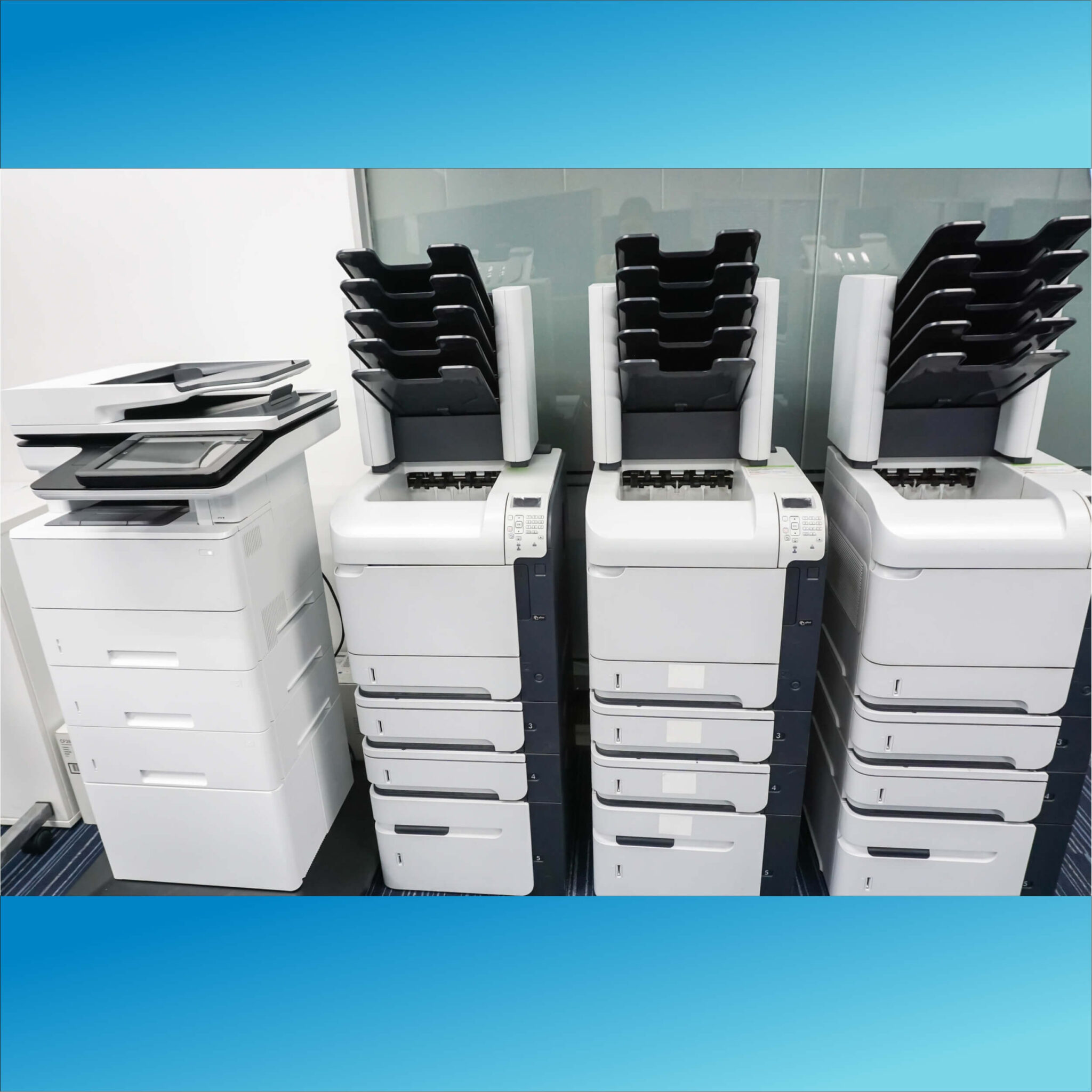
Offices and Businesses
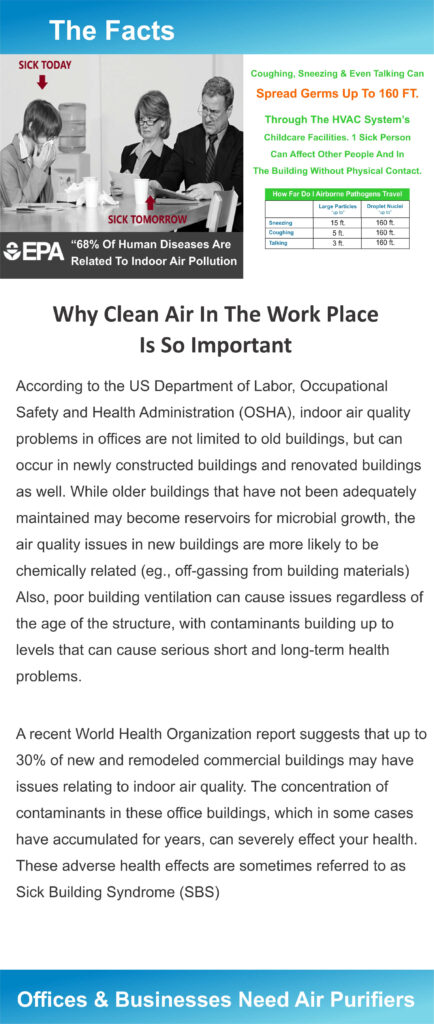
The Importance

What Is Sick Building Syndrome
Sick building syndrome (SBS) describes a range of symptoms thought to be linked to spending time in a certain building, most often a workplace, but no specific cause can be found. Symptoms of sick building syndrome get worse the longer you’re in a particular building and get better after you leave. The symptoms vary from just having minor discomfort to long term illnesses and in some cases even life threatening conditions. The symptoms can sometimes be caused just by being in a certain area of the building.

SBS Symptoms:
- Headache
- Fatigue
- Nausea
- Trouble focusing, concentrating or with memory
- Irritation of skin and eyes
- Blocked or runny nose
- Sore or scratchy throat
- Sneezing, cough or trouble breathing
- Hoarse voice
- Patients with asthma can experience more often recurrence of asthma attacks
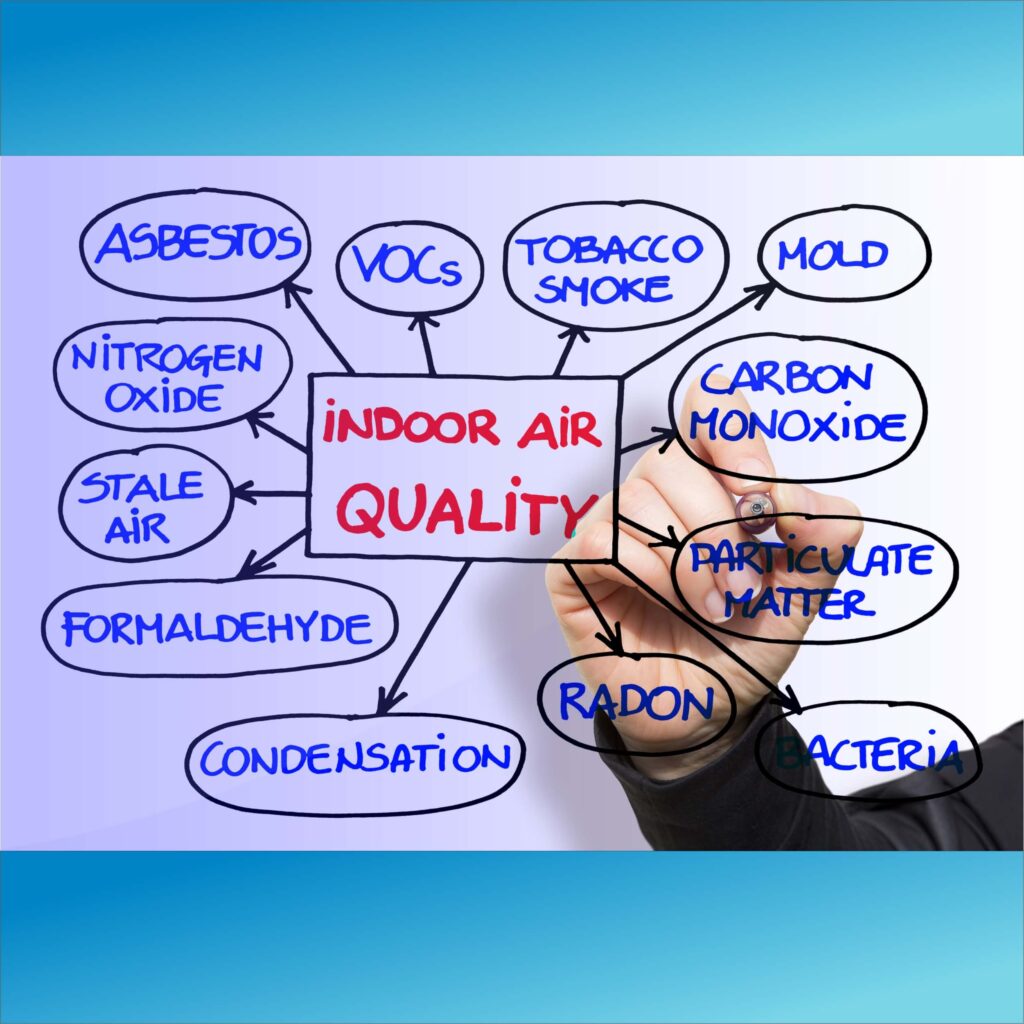
SBS Causes:
Even if you work in what seems to be a relatively clean environment, you may still be exposed to indoor air pollutants from the following:
- Working in an old building. Ductwork may contain dust, mold spores and bacteria that are then circulated through the entire building
- Working in a recently renovated building. Construction may have uncovered or released hazardous materials into the air (e.g., asbestos, lead)
- Aging or poorly maintained HVAC systems. Can leak carbon monoxide and other harmful combustion gases into the air
- Recently painted walls, new carpets and furniture. Can emit chemicals such as formaldehyde for up to 5 years
- Computers, photocopiers and other electrical equipment. Produce ozone, a toxic gas that is a known lung irritant and asthma trigger
- Laser printers. Can emit dangerous fine particulates
- Underground parking facilities. Carbon monoxide from vehicles can be sucked into air intakes and circulated through the building
- Cleaning products. Produce harmful Volatile Organic Compounds (VOCs)
- Fluorescent lighting. May produce photochemical smog
- Moist plant soils and dirty overflow trays. Ideal breeding grounds for mold and bacteria

Protecting Your Health At Work
In addition, in an open office environment, people with sensitivities to odors such as perfume can suffer immensely, and the potential for virus and bacteria transfer between workers is very high.
By protecting your personal air space through the use of a small air purifier at your work station or in your office, you can improve your health, comfort, concentration, energy level, productivity and general well-being throughout the work day.
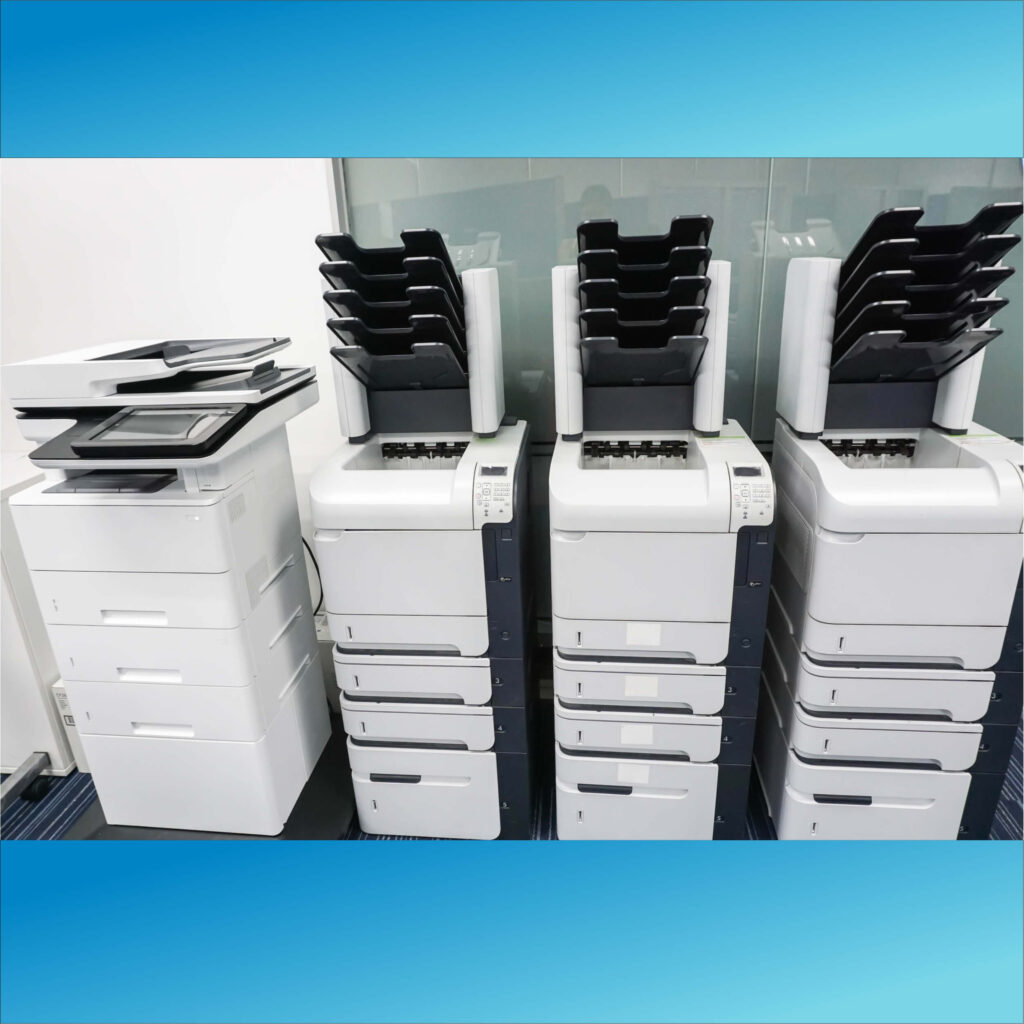
FACT FROM THE ENVIRONMENTAL SCIENCE & TECHNOLOGY JOURNAL:
Standard Office Laser Printers Can Emit As Much Fine-Particle-Pollution As Cigarette Smoke.
Laser Printer & Copier Emissions
Laser printer emissions are worthy of special mention as they have recently begun to be recognized as a serious health threat to office workers. In addition to ozone, numerous studies have confirmed that laser printers can emit fine and ultra-fine particles in the process of fusing the toner to paper. Studies conducted by the Queensland University of Technology’s Air Quality and Health program indicate that standard laser printers can increase indoor air pollution in an office by as much as 500%, with the concentration of microscopic particles near printers reaching levels several times greater than that produced by traffic on a busy road. Toxicological studies suggest that, when inhaled, these fine particles can penetrate deep into the lungs, where they can remain for long periods of time, causing acute or chronic illnesses.
